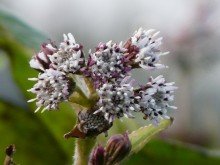The dark, damp days of December mean the number of reports from birding enthusiasts takes a down turn! This is some what inevitable, partly because opportunities to get out and about are limited and also because people only tend to report their more interesting sightings and these can be few and far between in mid-winter. That said December 2017 still turned up some notable records, mainly in the gull department. There were records of Bonaparte’s gull, ringed-bill gull, Iceland gull, glaucous gull, Sabine’s gull and little gull. To many of us these are just sea gulls and it takes the specialists to tell them apart.
Most of the gull sightings were very occasional records of birds moving along the coast but away from gulls there are a number of species that have made themselves at home here in Dorset for the winter. A stilt sandpiper has been on Brownsea for much of the last two months and great white egrets have been seen in a number of places from the Fleet, around Poole Harbour and inland at Longham Lakes. It has been a particularly good year for great northern divers with regular reports from Poole Harbour and Portland Harbour. These locations have also witnessed regular sightings of black-throated diver and black-necked grebe. Brent geese are now back in good numbers and can be found in the company of wintering duck and waders along our sheltered shorelines.
Marsh harrier, hen harrier and merlin were the most reported birds of prey from various locations but the Poole Harbour fringes seem to be the most popular wintering habitat for these species.
Amongst the passerines hawfinches remain the talking point. Normally a very scarce species in Dorset there have been records from across the county this winter and often from churchyards around yew trees. Churches in Leigh, Cattistock and Lychett Matravers have been good places to see them but they have even turned up in some private gardens. It has been a good year for firecrests too; not uncommon here in most winters but this year there seem to be reports from all along the coast of Dorset. A rare yellow-browed warbler has been on Portland for the whole of December.
One of the most bizarre records was that of three great bustards flying over Portland which took everyone by surprise at first. Once tracked down to fields alongside the Fleet their rings could be clearly seen and they quickly identified as being from the reintroduction project on Salisbury Plain. They were seen on and off around the Moonfleet area several times and it seems they have set up there as their wintering quarters. Will they return to Salisbury Plain in the spring? We will have to wait and see.
Away from birds bottle-nosed dolphins and common seals were seen from time to time and the otters on the River Stour at Blandford continue to entertain their audiences. A number of winter moth species were recorded and the last flower to bloom of the year, the winter heliotrope, could be found in various places. The winter heliotrope is a garden escape and forms large patches and can be a problem in the wrong place but they do add interest to brighten up what can be a dull time of the year.
You can find out much more about the nature of Dorset in December here: https://www.natureofdorset.co.uk/records-diary/december-2017
Peter Orchard







